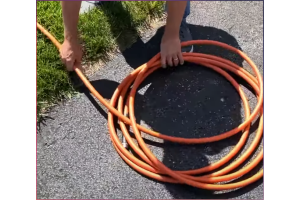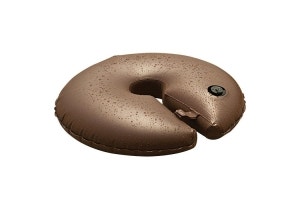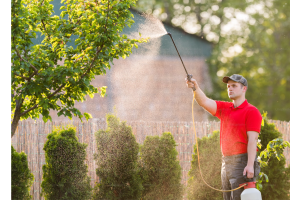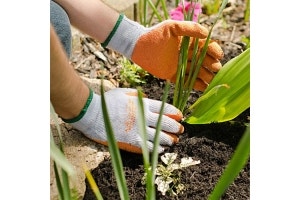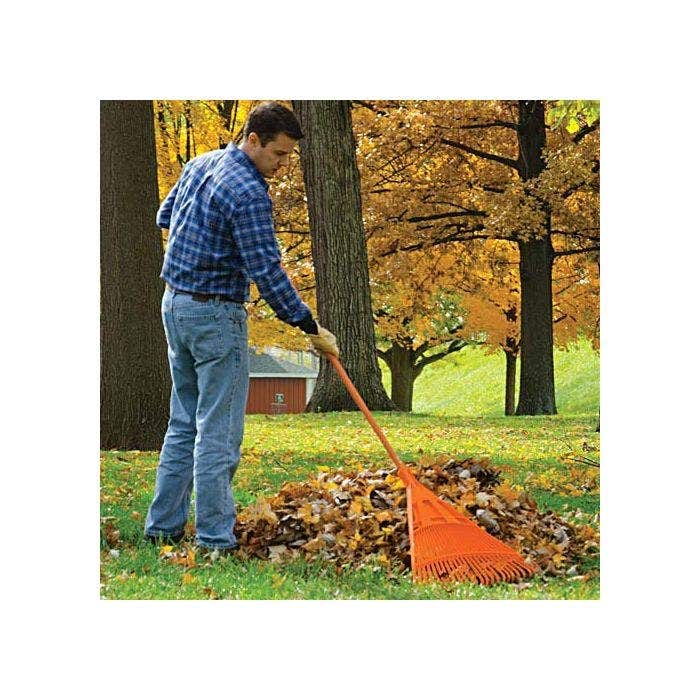
by Timothy Johnson
Remove fallen leaves.
The leaves can block out sunlight and trap in moisture—exactly what your lawn doesn't need. Make sure you get the leaves out of the corners and other hard-to-get-to areas.
Remember to also remove the leaves from your gutters. Winter storms plus clogged gutters equal overflow that can seep inside of your house, damage the exterior and flood your lawn, wash away hedges, and leave behind ruts that need extensive repair measures in the spring.
Rake the leaves onto a plastic tarp and dump them into a compost pile or bin (you can create one using a chicken-wire pen). "Stir" the leaves in your compost pile every week or so with a garden fork to aerate, and in the spring, you'll have environmentally friendly and extremely effective fertilizer for your lawn and garden.
Mow until the first hard frost.
Make sure you establish what particular type of grass you have to figure out what the proper length should be. As LawnStarter says, "keeping your mowing height high will protect roots from the cold, so we recommend keeping it around 2-3.5 inches." If left too long, the grass blades will mat and can become susceptible to fungi, such as snow mold. If cut too short, the grass will find it more difficult to withstand the cold and dryness of winter.
Once you're finished with the mower, store it away properly so that it's ready to go in the spring.
- Replace oil, spark plug, and air filter.
- Siphon excess gas from tank into a container and make sure fuel lines are empty to prevent gumming.
- Clean the underside of the mower deck with a scraper, putty knife, or wire brush.
- Sharpen the blade.
Water until the ground freezes.
In the fall, there tends to be more rain and more dew with less moisture evaporating. You'll need to be sure your grass roots are well hydrated going into winter. They need at least one inch of water per week. This is where a simple rain gauge can come in handy, because too much water is as harmful as too little.
Winterize your irrigation system.
Don't let the freezing temperatures sneak up on you in the springtime. You wouldn't want to turn your system on in the spring and find a leak or two.
- Turn off the water valve that supplies your sprinkler system. To be extra protective of the valve, wrap it up with insulation.
- Allow the sprinkler timer to run through all of its cycles.
- Use self-sticking foam insulating tape on above-the-ground pipes, or if possible, bury them.
- Disconnect and drain the garden hose. Store it where the freezing temperatures can't get to it.
Let your soil breathe.
You should aerate your lawn at least once per year. Core aeration helps prevent the soil from becoming compacted creating a surface barrier that blocks nutrients from reaching the grassroots. This creates pressure and hampers a healthy root system for the grass.
For small or large lawns, there are a few tools that you can use. You can use a garden fork with tines to poke through the thatch and punch out plugs of the compacted soil or use a tow-behind aerator that you can attach to a sitting lawn mower. Using a tow-behind aerator is both efficient and convenient for you to get the job done faster and requires less strength and energy.
Shop Turf & Landscape Management
Timothy Johnson is a green living and landscaping expert. He can often be found hiking with his two dogs or in the lavish garden he curates in his backyard.




